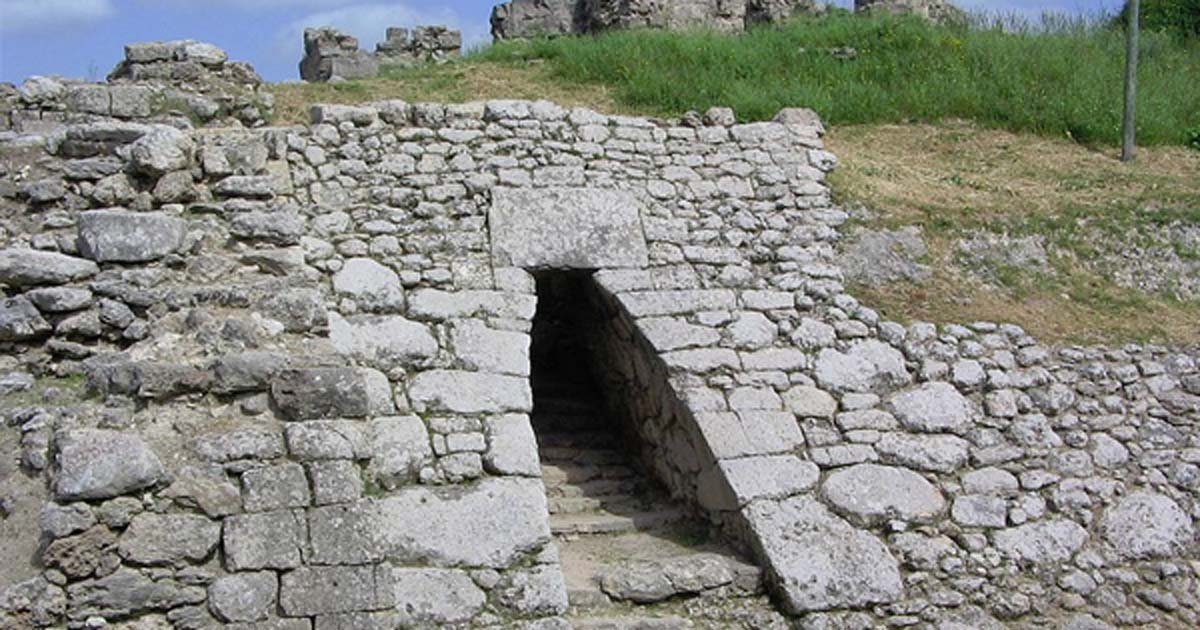Trading in the Bronze Age: Living the High Life in the Great City of Ugarit
Ugarit is an ancient city located on the coast of Syria. The ruins of this site are in the form of a tell (or mound) known as Ras Shamra, and are situated 10 km (6.2 miles) to the north of Latakia, the main port city of the country. This was an important city from about 1450 BC to 1200 BC, after which it was completely abandoned. Whilst Ugarit did not become a superpower in the ancient Middle East, it was a significant economic center, as it served as a major trade center between Egypt, Mesopotamia, and Asia Minor during the Bronze Age. The Ugarit inhabitants knew how to use their economic position to their advantage and withstood the rise and fall of many of their overlords. They are also remembered for their unique language.
Dating Ugarit
According to the archaeological evidence, Ugarit had been inhabited continuously since the Neolithic period, i.e. around the middle of the 7th millennium BC. Nevertheless, it was only around the beginning of the 2nd millennium BC that the city began to develop as a trade center.

Excavated ruins at Ras Shamra. (CC BY-SA 3.0)
The Ugaritic King List and other Ugaritic epics state that the Amorites, a semi-nomadic people from Mesopotamia, arrived in Ugarit at this point in time. The first exact dating of Ugarit comes from a carnelian bead identified with Sesostris I, a pharaoh from Middle Kingdom Egypt who lived during the 2nd millennium BC. This bead is also regarded as the earliest evidence of contact between Ugarit and ancient Egypt.
- Bronze Age cult complex discovered in Judean foothills may have been dedicated to Baal
- Scholar deciphers oldest known alphabet primer, in ancient Egyptian
- The ancient song recreated from 3,400-year-old cuneiform tablets

Bust of Senusret I in the Neues Museum, Berlin. (CC BY-SA 3.0)
One of the factors contributing to the success of Ugarit as a trade center is the fact that it was located at the crossroads of the Near Eastern land routes and the Mediterranean maritime routes. This also meant that the superpowers of the ancient world coveted this area of land, and sought to exert their influence over it.
During the middle of the 14th century BC, for example, Ugarit was a vassal of the Hittite Empire, and fought against the Egyptian pharaoh Ramesses II at the Battle of Kadesh. At another point of time, however, they were under the control of the Hyksos.
Ugarit’s Fickle Alliances
Ugarit relied on its economic, rather than political or military, prowess to survive in the ancient world. It was also a pragmatic entity that adapted to changing situations. For example, as mentioned earlier, Ugarit was a vassal of the Hittites. Nevertheless, the loyalty of Ugarit depended on the strength of their overlords. When the Hittites were powerful, their merchants were given special treatment, and financial as well as military support were provided. On the other hand, when the Hittites were in a weak position, Ugarit did not hesitate to exploit the situation at hand.

Location of Hittites. (CC BY-SA 3.0)
Yet, for all its acumen, Ugarit collapsed around the middle of the 12th century BC due to a combination of several factors. These include the migration of the Sea Peoples from the West and the ruralization of the Ugaritic countryside, which contributed to the collapse of the palace-temple economy. Ugarit was forgotten by history, and only rediscovered in the early part of the 20th century.
Site Discoveries
In 1928, a tomb was discovered by a farmer who was working in his field. This discovery was reported to the French authorities, who were the colonial masters of the country, and an archaeological expedition was sent to study the site. The first cuneiform tablet, in Akkadian, was discovered just five days after excavations began. By 1935, the site was identified as Ugarit, thanks to the tablets.
- Easy as Alep, Bet, Gimel? Cambridge Research Explores Social Context of Ancient Writing
- Identifying an Ancient Battle and Dating the Song of Deborah
- Trojans at the Battle of Qadesh

Paved floor and walls in the ruins of the Ugarit palace. (Mohammed osta/CC BY SA 3.0)
In addition to these inscriptions, texts written in an unknown language also came to light. Though written in cuneiform, it was determined that the language was alphabetic, rather than logo-syllabic (in which the signs represent syllables rather than letters), like Akkadian. This language was eventually deciphered, and identified as Ugaritic, a Northwest Semitic language in the same family group as Hebrew, Phoenician, and Aramaic.

An Akkadian inscription. (Public Domain)
Further excavations have been undertaken, as well as the translation of the Ugaritic texts that have been unearthed. In the latter, such well known pieces of ancient Near Eastern literature, such as the Epic of Gilgamesh and the Flood Story have been found. The most important text of this language, however, is the Baal Cycle, which is a set of stories about the Canaanite storm god Baal.

The Deluge tablet of the Gilgamesh epic in Akkadian. (Public Domain)
Top image: Ugarit Palace Entrance. Source: (CC BY-SA 4.0)
By Wu Mingren
References
Department of Ancient Near Eastern Art, The Metropolitan Museum of Art, 2004. Ugarit. [Online]
Available at: http://www.metmuseum.org/toah/hd/ugar/hd_ugar.htm
Pardee, D., 2002. Ugarit Ritual Texts. [Online]
Available at: https://oi.uchicago.edu/sites/oi.uchicago.edu/files/uploads/shared/docs/nn172.pdf
Sacred Destinations, 2017. Ugarit, Syria. [Online]
Available at: http://www.sacred-destinations.com/syria/ugarit
UNESCO, 2017. Alphabet of Ugarit. [Online]
Available at: http://www.unesco.org/culture/museum-for-dialogue/item/en/94/alphabet-of-ugarit
www.pheniciens.com, 2017. Ugarit. [Online]
Available at: http://www.pheniciens.com/cites/ougarit.php?lang=en

















